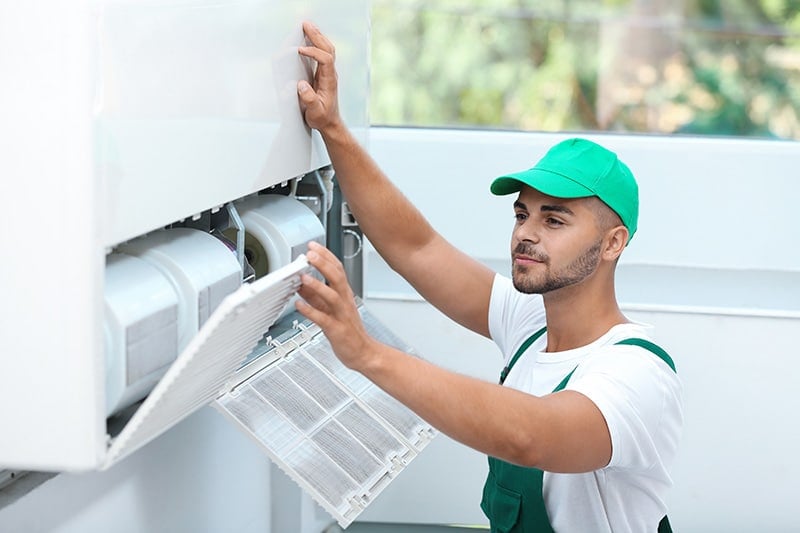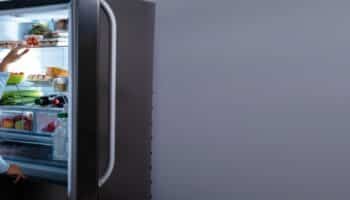Is your refrigerator not cold enough?
I’ve been there too! Dealing with temperature issues can be super frustrating.
Luckily, you’ve come to the right place.
If your fridge is not cold enough, you’ll need to verify the power supply, check the thermostat, inspect the door, consider ambient temperature, and check for airflow issues.
Ready to learn how to make your fridge colder? Let’s dive in!
Why trust us? This article was written by Craig Anderson and Andy Fulenchek.
Craig has helped thousands of other homeowners repair their appliances since 2016.
Andy is one of our resident appliance repair experts with over a decade of experience. He currently runs his appliance repair company with a team of trusted technicians.
Refrigerator Not Cold Enough? Try These 7 Fixes
Different reasons can explain why you’re experiencing temperature issues. Luckily, there are various solutions you can try to make your fridge colder.
#1 Check the Power Supply
If your fridge is not cold enough, you’ll need to check if it’s still plugged in.
I know checking the power supply can seem basic, but you’d be surprised how often I see plugs become loose, causing the fridge to cool down unexpectedly.
If the interior light is turned off and you can’t hear the compressor, check the circuit breaker and ensure it’s in the “On” position. You can also try using a different outlet.
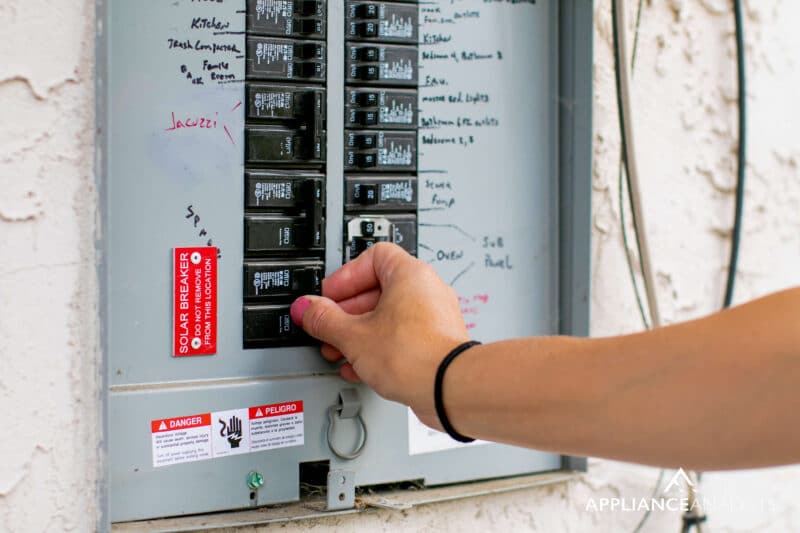
If the original power outlet you were trying to use is the problem, please get in touch with a professional, as you could be experiencing electrical issues in your home.
However, if the lights are on and your fridge receives the correct voltage (120 volts), but it’s still not cold enough, please keep reading.
#2 Check Your Thermostat
If your refrigerator has temperature issues, you’ll need to check the thermostat.
Most of the time, you’ll never need to move the thermostat inside your fridge. However, the temperature dial can be accidentally moved when you bump it with groceries or due to frost buildup.
Now, adjusting the temperature dial can be a bit confusing because it’s not always clear whether setting 1 indicates a hotter or colder temperature.
Don’t worry, though. I’m here to help.
The settings on the dial inside your fridge represent the power of the refrigerant being used. So, the higher the number, the colder your fridge will get. If your dial reads 1 to 5, it means that 5 will be the coldest and 1 will be the warmest.
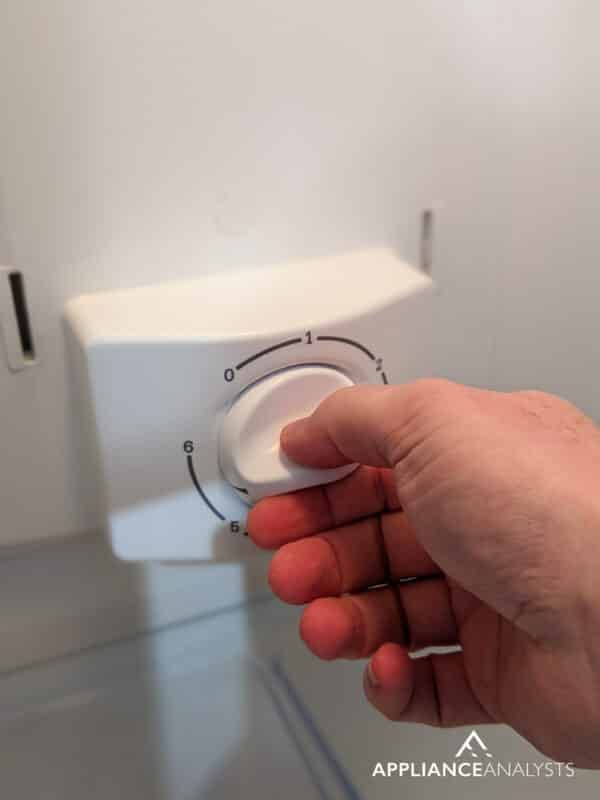
Try setting your fridge somewhere in the middle to get a feeling of how cold it can get.
#3 Inspect the Door Seal
I tend to find that when a fridge is not cold enough, it’s typically because of a damaged door seal.
You see, the gasket creates an airtight seal when the fridge is closed to prevent cold air from escaping and warm air from entering the unit. If it’s damaged, your fridge will need to work harder to maintain a cold temperature.
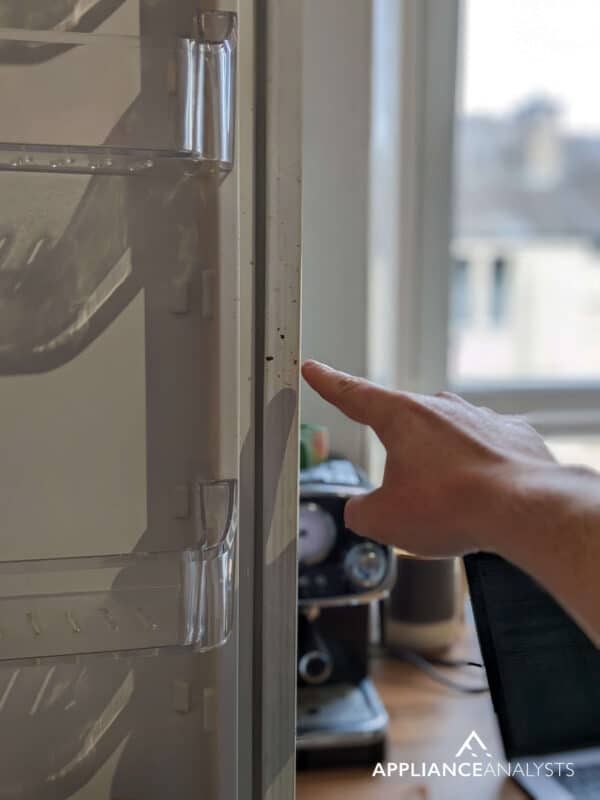
Please clean the gasket with warm soapy water or vinegar and let it dry. You’ll need to replace it if you notice it’s damaged or broken. Here’s how to do it:
- Start removing the old door gasket in one corner.
- You’ll probably need a screwdriver to “pop” the corner out of the bracket.
- Slowly peel the old gasket out of the door.
- Clean the fridge door and let it dry.
- Insert the new gasket starting in one corner and working your way around.
- Press firmly into the door to snap the new gasket in place.
Note: If the new gasket is bent out of shape from its packaging, you can use a blow dryer to gently heat it and get it back to its original shape.
If you want to get any replacement part – or see how much one would cost – click to enter your model number in the search bar below. Our partners at AppliancePartsPros stock almost every part with free guides on how to install them.

#4 Consider Ambient Temperature
When I see a fridge not getting cold enough, I always consider room temperature.
You see, if the fridge is in a hot environment like a garage, it will have to work harder to stay cool, leading to temperature issues and high energy bills.
So, please try opening the door only when necessary. However, if your fridge still can’t keep up with the hot weather, I recommend moving it away from the wall. Adding plenty of air space around your fridge gives it more circulation and helps it cool down faster.
Keep in mind that your refrigerator will also need to work harder if you place hot food inside. So, it’s important to let your food cool down to room temperature before storing it in the fridge.
#5 Check For Airflow Issues
If you’ve tried the fixes above, but your fridge is still not cold enough, you’ll need to check for airflow issues.
You see, refrigerators rely on proper airflow to maintain cold and consistent temperatures. So, airflow issues can result in insufficient cooling.
Here’s how to prevent airflow issues:
- Avoid overloading your fridge. Doing so can keep the air from circulating effectively.
- Ensure the vents inside your fridge aren’t blocked by food containers.
- Unplug your refrigerator and clean the condenser coils (typically at the back of your fridge). You can use a vacuum or cleaning brush. Make sure to remove all the dust and debris.
- Inspect the condenser fan and ensure it’s not stuck. If it’s damaged, please replace it.
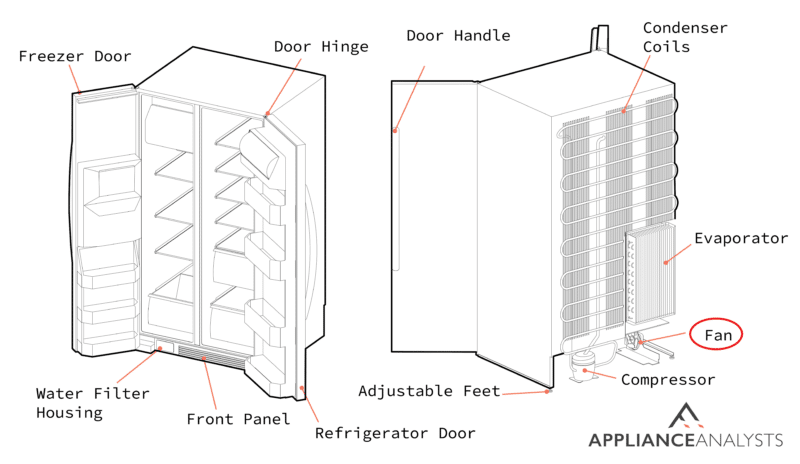
It’s worth noting that you should also avoid adding many items to your fridge’s door. The doors are the areas that heat up the fastest. Make sure the weight on both doors stays low.
#6 Inspect the Door Switch
While uncommon, I’ve found that a faulty door switch can also cause temperature issues in your fridge.
You see, the door switch detects when the door is open or closed to control different functions, such as the interior light. If the switch is damaged, it can think that the door is open when it’s actually closed. As a result, it could keep the interior light turned on and generate heat.
Read the manufacturer’s manual and locate the door switch. Then, carefully remove it and test it with a multimeter for continuity. If you don’t get the recommended readings, you’ll need to replace the door switch with a new one.
If you want to get any replacement part – or see how much one would cost – click to enter your model number in the search bar below. Our partners at AppliancePartsPros stock almost every part with free guides on how to install them.

#7 Consider Your Fridge’s Age
If your fridge is still not cold enough, there’s probably a more complex issue with one of the internal components.
For instance, a faulty control board will not accurately communicate with the cooling system, causing temperature inconsistencies. Issues with the compressor could also explain why your fridge is not cold enough.
In such cases, my usual advice is to consider your fridge’s age, as repairing the control board or compressor can be expensive, and a professional is required.
If you prefer to buy a new, efficient fridge, check out our buyer’s guide!
How Cold Should Your Fridge Be?
Keeping your fridge cool is great, but what temperature should you look for?
According to the FDA, your fridge should be at 40 degrees Fahrenheit (4 degrees Celsius) to ensure the safety of your food.
To steer clear of the danger zone, it’s essential to maintain your fridge at 40 degrees or lower. The USDA outlines the danger zone as anywhere between 40 degrees to 140 degrees Fahrenheit since bacteria can quickly grow within this range. In just as little as two hours in the danger zone, food can spoil.
So, maintaining your fridge cool isn’t only about having chilled drinks ready for a hot day- it’s also about keeping your food safe.
Key Takeaways for an Even Colder Fridge
Hopefully, now you know how to fix your fridge’s temperature issues.
Remember that if your refrigerator is not cold enough, you’ll need to check the power supply, inspect the door seal and switch, consider ambient temperature, and check for airflow issues. Don’t forget to set the right temperature to make your fridge colder.
Thank you so much for reading! Please check out our other related posts if you found this guide helpful.
Have a great day.

